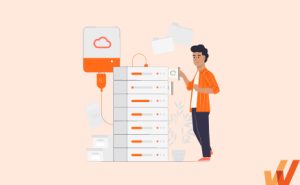
According to PwC, 32% of customers would leave a brand they loved after just one bad experience. Or, as customer experience expert Esteban Kolsky reports, poor user experience contributes to 67% of customer churn.
Analyzing that data shows us that it doesn’t matter how robust your product features are, how many leads you jam into your funnels, or how effective your marketing and sales operations are. Without an intuitive, simple user experience and customer journey, companies and their products fail to reach their full potential.
You must first provide a competitive, engaging user experience to engage and retain your customers after they’re won. Improving user experience starts with figuring out how users interact with your product, its features, and your website.
Product teams can leverage behavior analytics software to understand how users interact with your site or product, and empower them to create the most optimal experience for your product or website.
What are the best user behavior analytics tools in 2024?
- Whatfix
- Mixpanel
- Amplitude Analytics
- FullStory
- Hotjar
- Crazy Egg
- Pendo
- Heap
- Smartlook
- LogRocket
- CleverTap

What Is a Behavior Analytics Tool?
Behavior analytics tools are software platforms for collecting and analyzing user data to help you understand how people interact with your resources — your website, products, downloadable resources, landing pages, etc.
Behavior analytics starts with asking several questions, such as:
- What elements do users interact with most?
- Which features do they ignore and hardly ever interact with?
- Which pages do they visit and how often?
- What actions do they take before leaving your website or application?
- Where do they struggle, spend more time on page, or become unresponsive while using your website or product?
The ultimate aim of behavior analytics tools is to reduce friction, improve user retention, drive conversions, and increase overall product adoption— to do that, you need to study what people encounter on your online assets and figure out how to simplify their user experience.
Features of Behavior Analytics Software
A behavior analytics tool observes how individual users interact with your online assets so that you can figure out how to:
- Optimize elements to work better.
- Offer a better user experience.
- Localize your offer for specific geographies and regions—depending on where users are located, the elements they use most, and their likelihood to convert.
To achieve that, behavior analytics tools use several mechanisms to capture user experience and product adoption metrics that show how people are interacting with your online assets.
1. Activity maps
An activity map tracks where your users access your website or product and segments that data into countries, regions, cities, etc. That data can be used to improve user experience in several ways:
- If you have a significant number of users coming from a bilingual country, consider localizing your website or product so they can have a version available in their local language.
- Create offers tailored to users in specific geographical locations.
- Restrict access for IP addresses from certain regions where your website has been attacked from.
- Provide support in the local language for particular regions.
Activity maps track signups, usage, and incidents so businesses can localize their services and better serve international users.
2. Flow maps
User flow maps show the sequence of events users perform after they land on your website, sign into your product, log into your application. If you can track the user journey, you can figure out which elements to improve, maintain as-is, or remove entirely.
- Where do most user sessions end? Make that element stand out so that it’s easy to locate.
- Do users for a specific region always end their user journey on a particular page? Create a local website version and highlight that particular feature or function.
- Remove the hoops users need to jump through to find your most-used features.
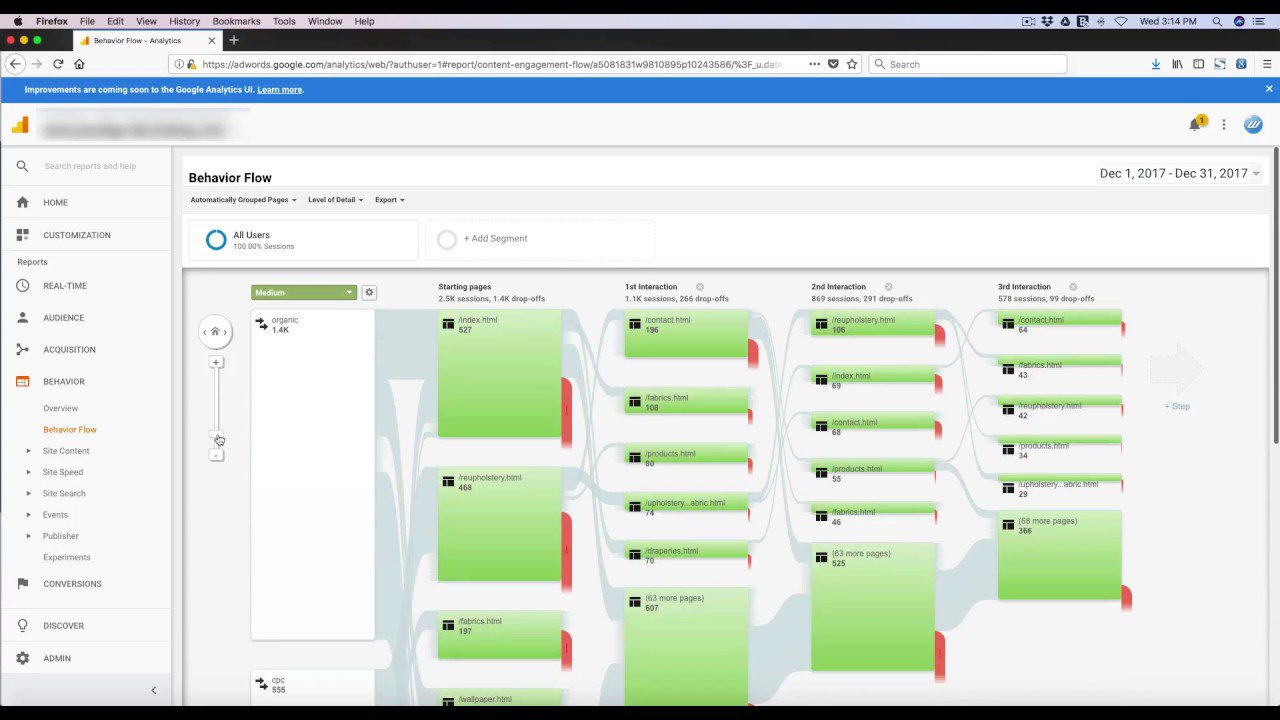
Flow maps visually represent your customer journey to help you figure out where you can improve their user experience.
3. Funnel analytics
Funnel analysis reports track how users progress through the different conversion stages.
Whether you’re a marketer, a content creator, or a growth engineer trying to reduce time to value (TTV), boost conversion rates, or simplify your user onboarding experience, understanding where users and visitors end up in their journey with your product will help you:
- Track which part of the funnel where users drop off.
- Determine where your high-quality visitors come from so you can double down on those channels.
- Find your high-traffic, high-exit pages where you can
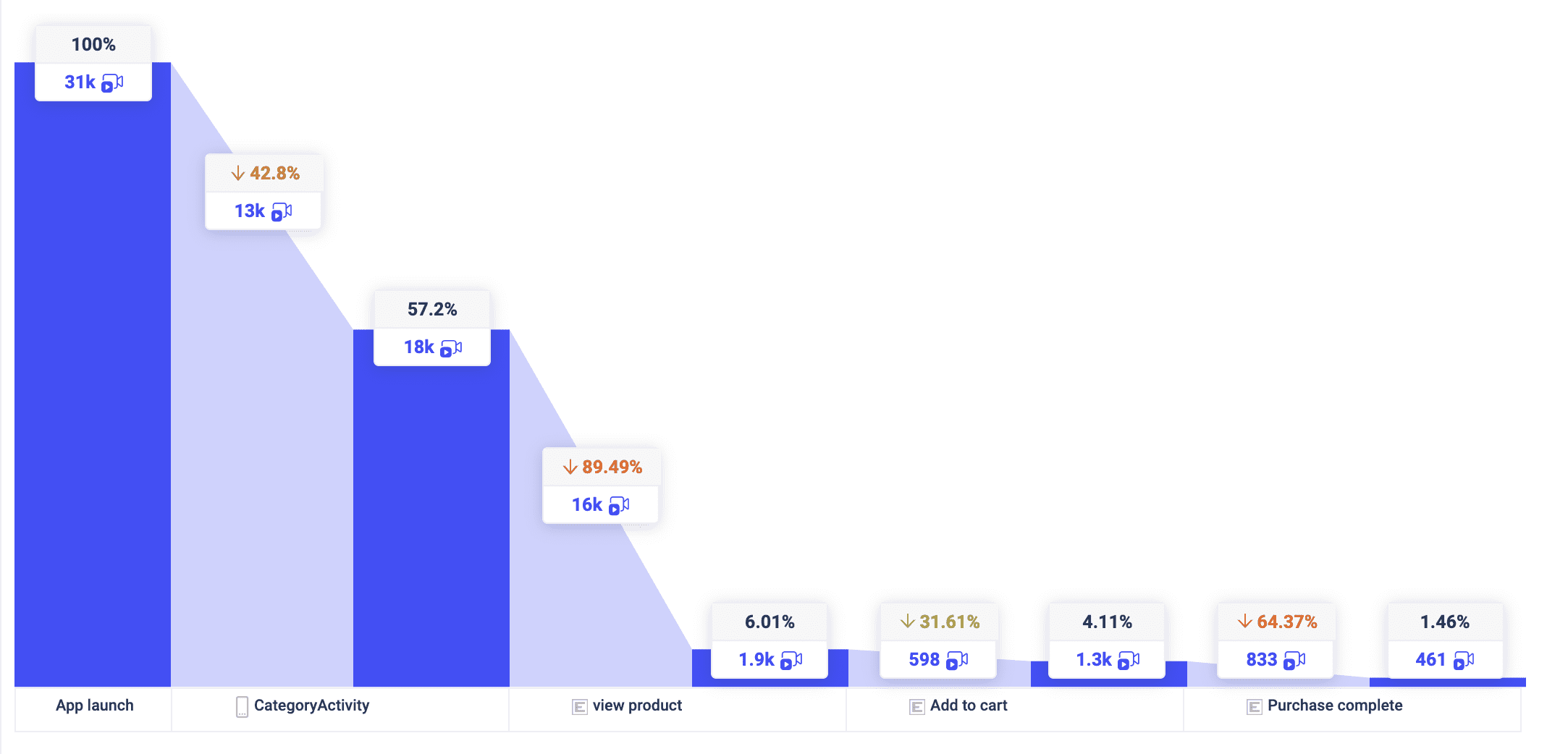
Funnel analytics helps ensure you know why (or why not) your users are converting and how you can optimize your product marketing process to offer more value.
4. Heatmaps
Heatmaps track the elements users interact with the most and the least, using colors on a scale of red to blue. Heatmaps help you aggregate user experience data across several sessions and measure their average user experience by tracking:
- Whether users are seeing useful page elements, or getting distracted by non-clickable content.
- How far users need to scroll or navigate to find resources.
- Any issues users are encountering across devices.
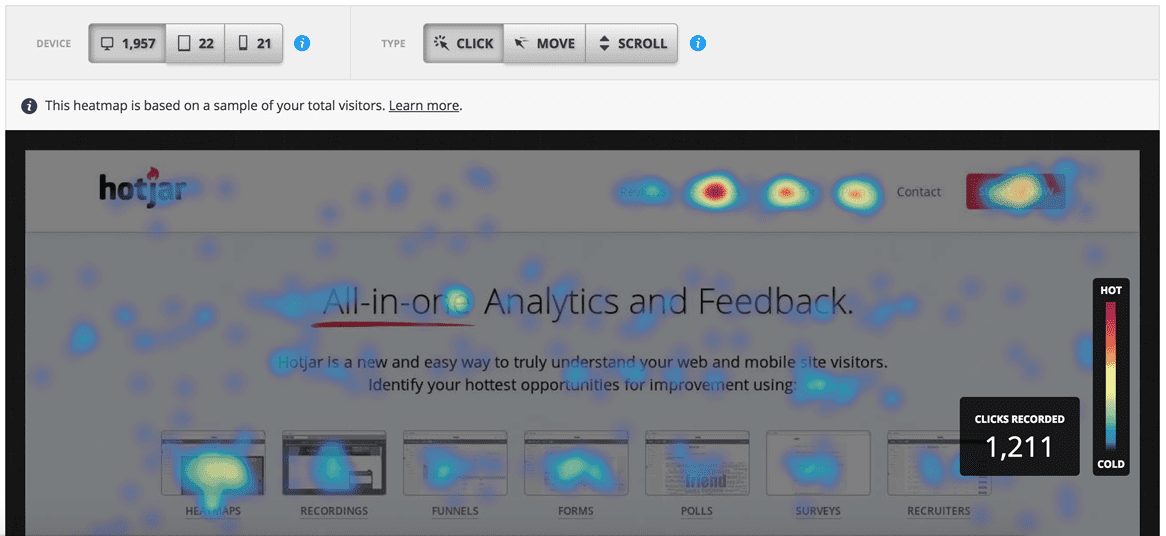
A single customer hovering over CTAs, links, and elements on your pages probably doesn’t mean much. Heatmaps help you collect hundreds and thousands of them so you can see patterns of what to improve in your user experience.
5. A/B testing
A/B testing compares two versions of a product, landing page, or application against each other to determine which one outperforms the other. Split testing can be used to track how users respond to CTAs, design patterns, content, pricing, or images, on your website and products.
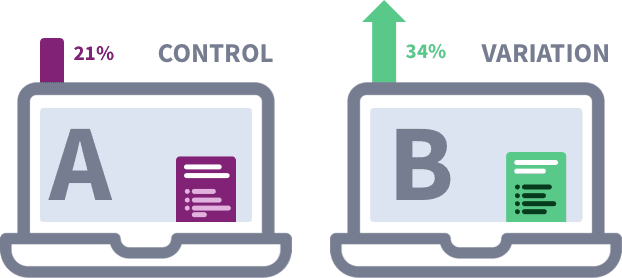

11 Best Behavior Analytics Tools in 2024
We’ve researched several of the best behavior analytics tools for your marketing, product development, conversion rate optimization (CRO), and a better overall understanding of your customer and user behavior.
Here are the eleven best behavior analytics software, with a breakdown of the features for each product and how you can leverage them to track and improve the user experience for your website and products.


1. Whatfix
- G2 Review Rating: 4.7 out of 5 stars
- Price: Contact us for custom pricing
Whatfix is a digital adoption platform (DAP) and product analytics platform that empowers product teams with a no-code platform to build in-app guided experiences, analyze the behavior of your users and how they interact with your product, and capture event analytics.
With the behavioral data to know how users navigate and use their software in their daily workflow, organizations are empowered to make data-driven decisions on what new in-app elements and user flows to create. With Whatfix, product teams are empowered to build in-app guidance such as step-by-step walkthroughs, tool tips, nudges, and create a library of helpful support content that will guide and support new and returning users on how to best utilize and adopt software.
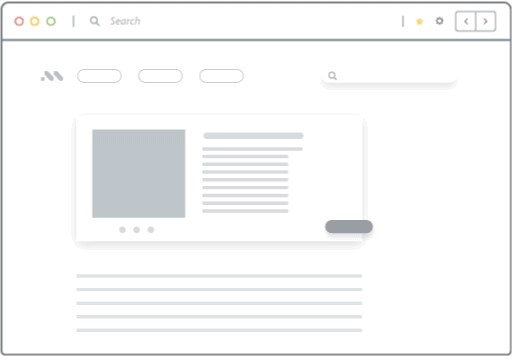

With Whatfix Analytics, product teams are empowered to track user behavior throughout their applications, allowing them to see how users engage with their product and how their in-app content is performing – allowing them to achieve their product adoption goals.
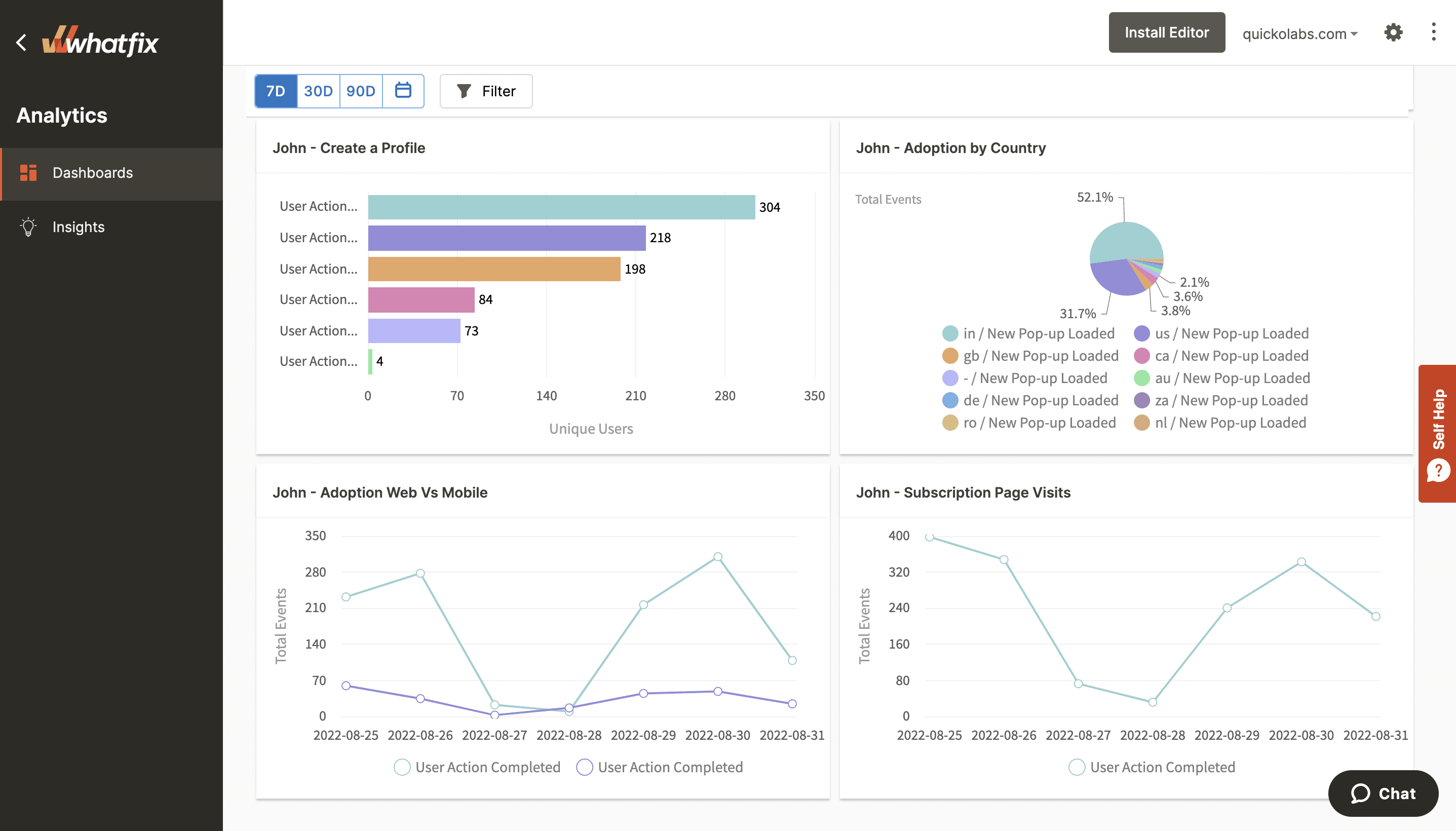

What sets Whatfix apart is its ability to allow product teams to capture contextual, explicit event data with a no-code implementation. This means non-technical product managers are empowered with the tools and data to be effective in their roles – without the need for engineering support.




2. Mixpanel
- G2 Review Rating: 4.5 out of 5 stars
- Price: Limited free tier; paid tier starts at $25 per month
Mixpanel is a behavior analytics suite designed to help product teams track user interactions across mobile and web resources.
It offers cohort segmentation, integrations with your product and data stack, and engagement metrics rendered in interactive reports and engaging dashboards where you track metrics in real-time.
A challenge of Mixpanel is that it requires product managers and growth marketers (or anyone that needs to use the platform) to create rules for what behavior metrics they want to track, and then rely on engineering support to build, manage, and update a code-based implementation.
This is known as explicit event tracking and allows organizations to create custom event tracking parameters. However, this reliance on development support means its not a great solution for agile teams, or teams that may not have the engineering support to take full advantage of Mixpanel’s platform.
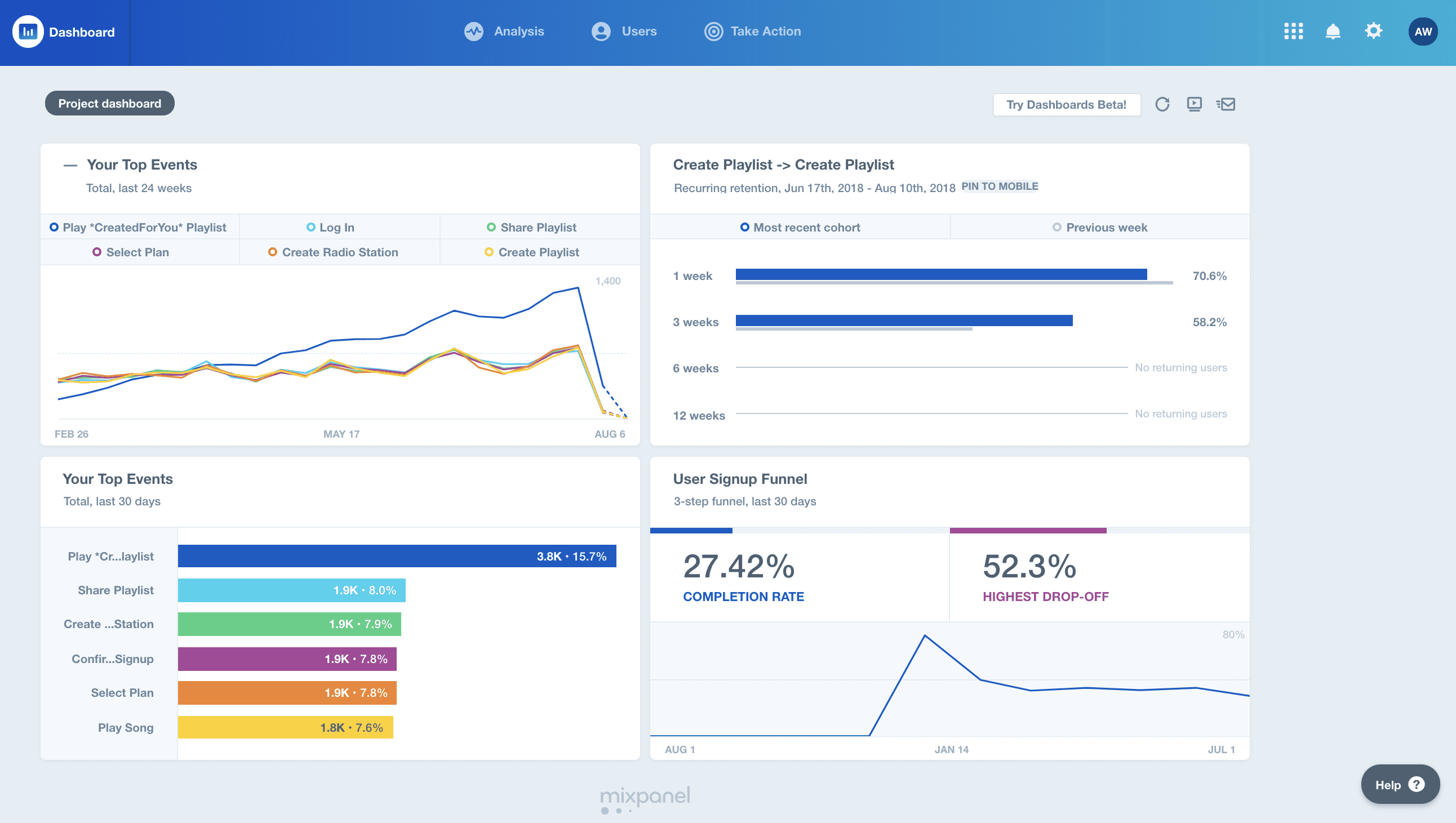



3. Amplitude Analytics
- G2 Review Rating: 4.5 out of 5 stars
- Price: Limited free tier; paid tier reportedly starts at roughly $995 per month
Amplitude is a product analytics platform that captures user behavior data that allows product managers and marketers to make data-driven decisions to drive product adoption and signups. It is built for product and marketing teams that want to:
- Figure out how their users are engaging with their online properties.
- Test different versions of the same asset to monitor conversions and goal completions.
- Recommend helpful resources personalized to individual users.
- Segment users to help you target them with more relevant offers.
Amplitude works across mobile and web resources (landing pages, applications, etc.). Like Mixpanel, Amplitude is an explicit event tracking tool that has a highly technical implementation that requires significant support from engineering teams.
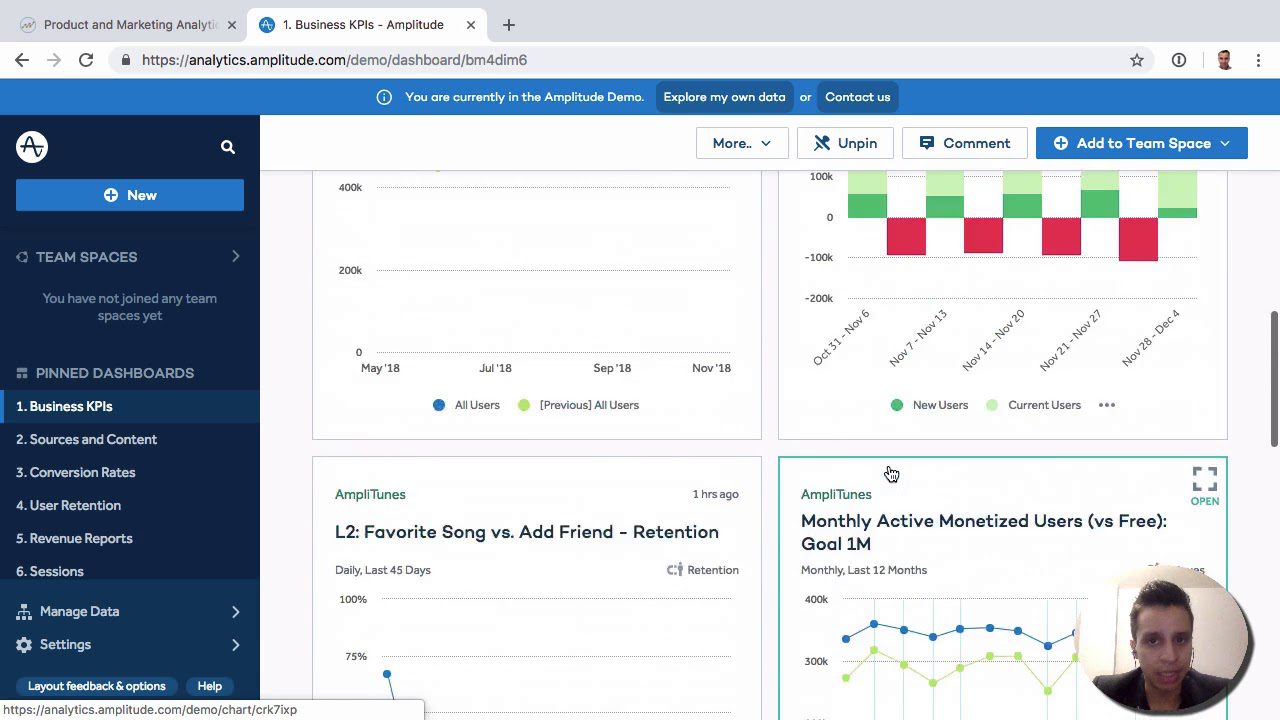



4. FullStory
- G2 Review Rating: 4.5 out of 5 stars
- Price: Starts at $199 per month; Free startup plan
Fullstory is a digital experience platform (DXP) designed for marketers and product developers who want to:
- Gain deeper insights into the user experience on their web properties.
- Capture and document the entire customer journey.
- Track frustration signals and follow customers throughout the funnel.
- Replay individual sessions or aggregate them into heatmaps.
On the downside, Fullstory is quite expensive, and pricing only goes up if you want to monitor more sessions. The product can also be quite laggy when you start capturing live sessions — or the more of those that you capture.
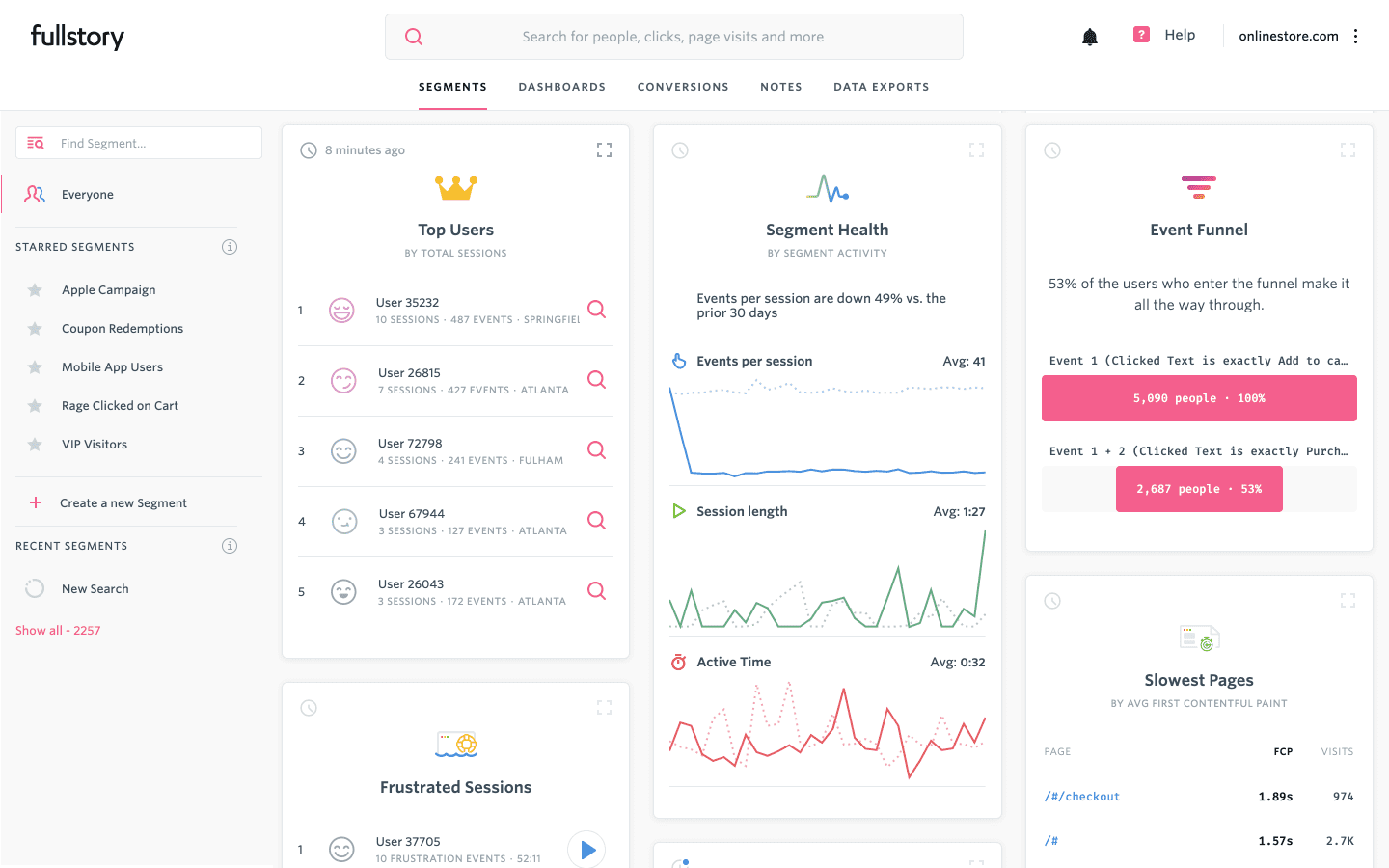



5. Hotjar
- G2 Review Rating: 4.4 out of 5 stars
- Price: Limited free tier; complicated usage-based pricing
When you first learn about Hotjar, you assume it’s just a heatmap product that shows how users engage with individual webpages. And yes, but there’s more: Hotjar is an entire customer experience suite product and marketing teams use to:
- Capture user feedback with surveys.
- Record live sessions to track customer behavior in real-time.
- Aggregate multiple sessions into heatmaps.
For instance, a customer can grade and leave feedback on individual pages. A marketer going through their feedback can replay their session to figure out what their experience looked like and find how to improve it.





6. Crazy Egg
- G2 Review Rating: 4.2 out of 5 stars
- Price: Starts at $29 per month
Crazy Egg is an analytics platform that is made more for marketers. It offers a behavior analytics platforms that combines the following:
- Access heatmaps, scrollmaps, and confetti reports that inform you on where to put CTAs, which elements users interact with, and how you can declutter your website and product pages
- Segment your traffic by OS, region, time on site, and source
- Record individual sessions and test versions of the same page to figure out which works best
- Track the errors users see live
- Monitor and measure CRO metrics
Crazy Egg works more like a marketing insights platform, and it may not meet your use case if you’re a product team looking to track user behavior and get actionable insights on what to change to improve your metrics.
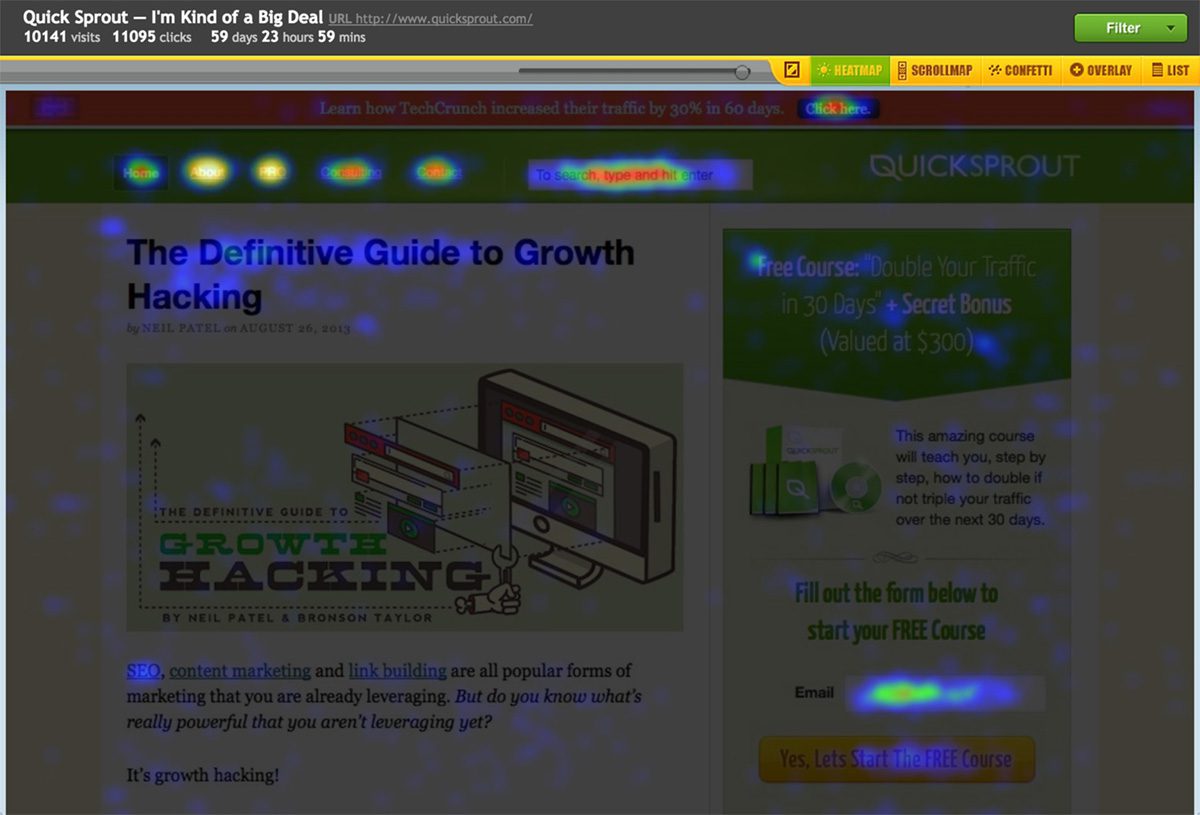



7. Pendo
- G2 Review Rating: 4.5 out of 5 stars
- Price: Reports place Pendo’s features in the $2,000 – $5,000 per year bracket, per product
Pendo can seem like a handful for a marketer or product manager who’s looking to just track how users engage with its digital adoption platform — it does everything from user onboarding, to product engagement, website personalization, analytics, and roadmapping.
Marketers and product teams that use Pendo can:
- Segment and track user behavior across mobile, web, and internal apps.
- Create better product roadmaps for customers and internal product developers.
- Connect Pendo’s behavior analytics tools with the rest of their marketing and product stack.
- Track product usage to figure out how to dedicate resources to product features.
Depending on your team’s size and where you’re at in your product’s journey, Pendo can either be a great fit, a bit unwieldy, or it can even get in the way with all of its many features.
And did we mention that Pendo is expensive? Reviews on Capiche have prices starting at $2,000 – $5,000 per year for a single product, and around $12,000 per year for the lower-tier package – which may drive you to explore Pendo alternatives, like Whatfix.
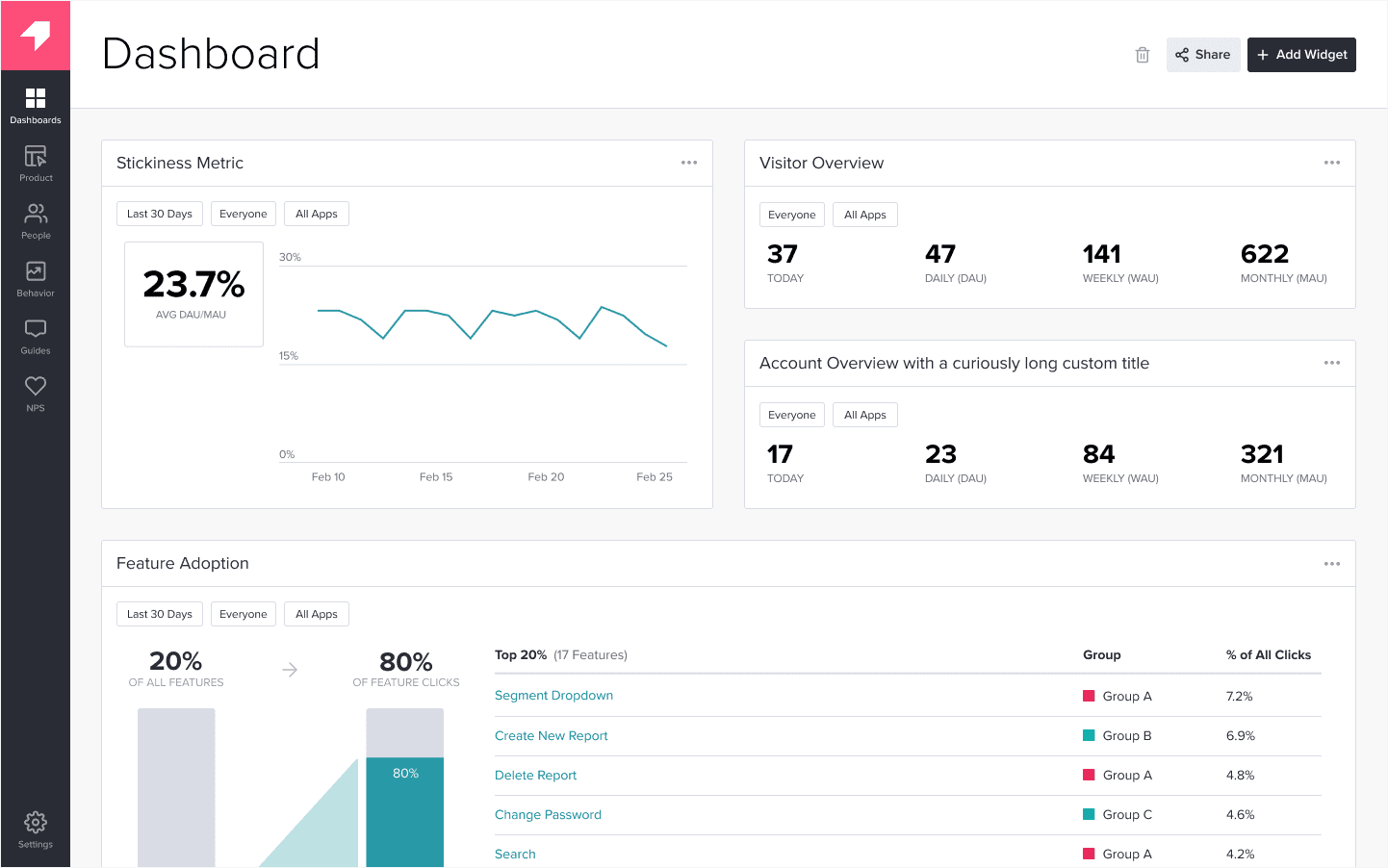

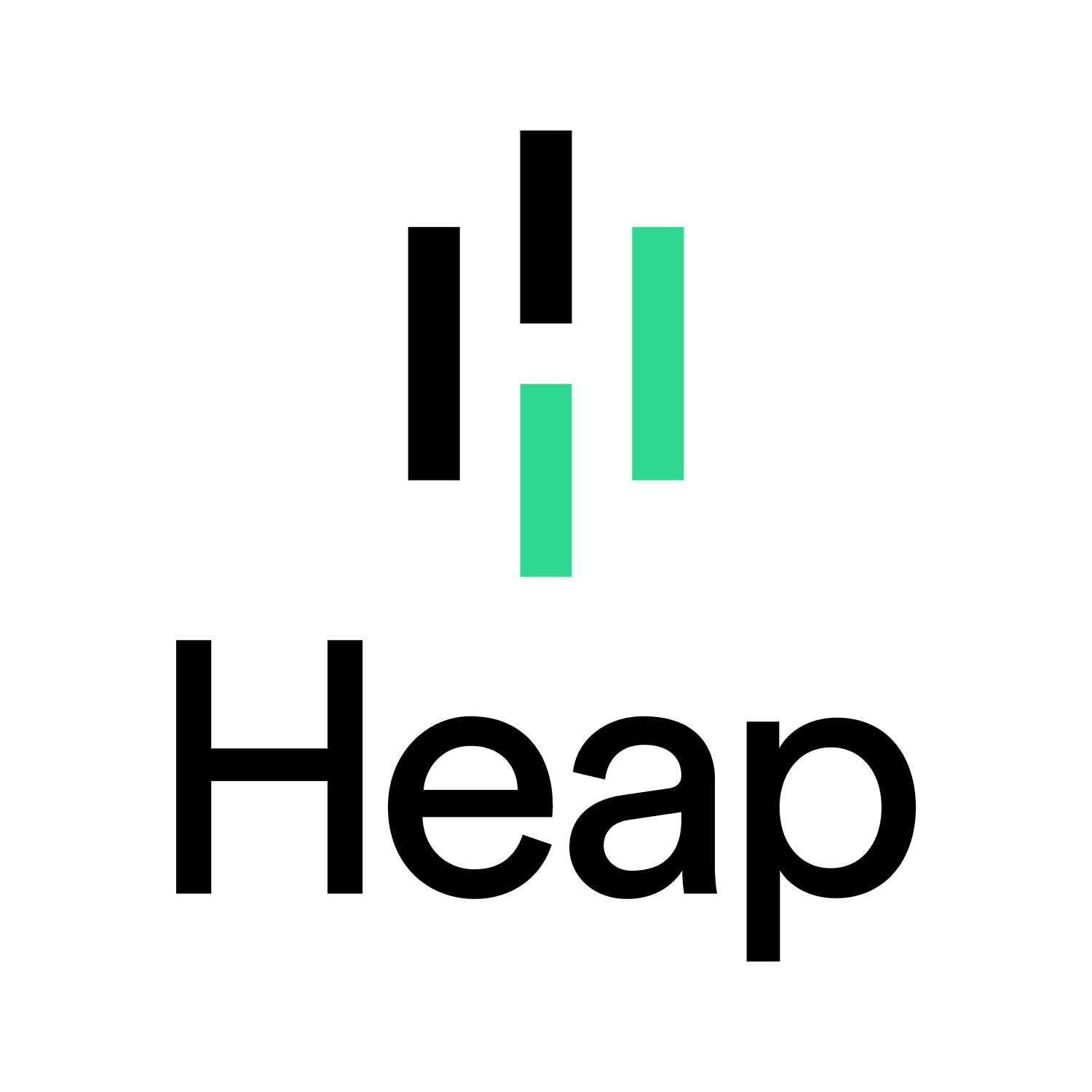

8. Heap
- G2 Review Rating: 4.3
- Price: Limited free tier; paid tier starts at $3,600 per year
Heap is a behavioral data platform over 8,000 product teams use to track user insights, create memorable digital experiences, and decide what to build, how soon, and how much resources to allocate.
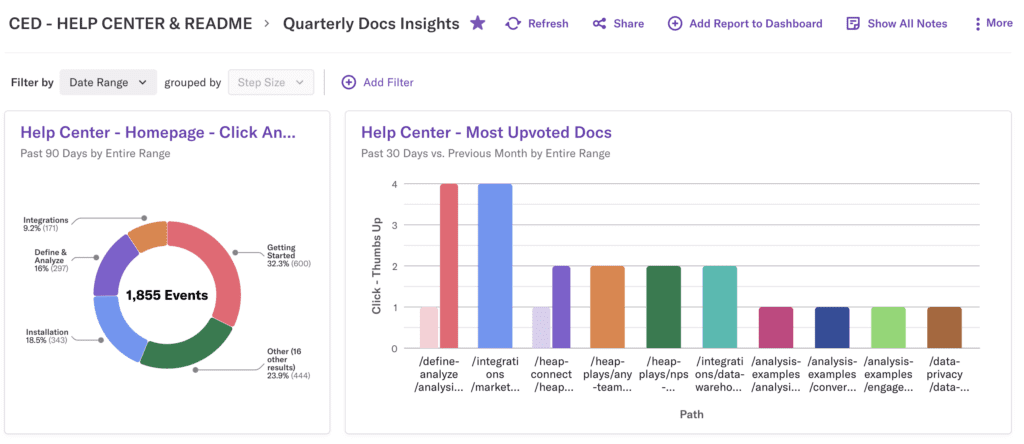

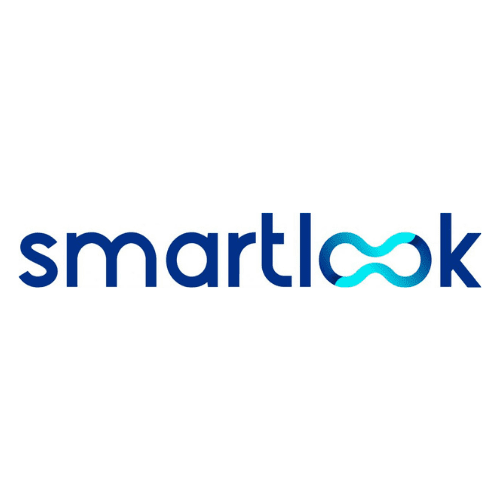

9. Smartlook
- G2 Review Rating: 4.6 out of 5 stars
- Price: Limited free tier; paid tier starts at $39 per month
Like its peers on our list, Smartlook combines A/B testing, heatmaps, cohort analysis, and funnel analysis into a behavior analytics platform you can use to improve conversion on your mobile app and web assets like your landing pages, e-commerce product pages, help documentation, etc.
- Record and replay individual session recording — even better, skip to the highlights.
- Track which actions users perform and how often.
- Analyze where and why users drop off the funnel.
- Use heatmaps to measure the most important elements on your pages.
Smartlook offers free analytics both for mobile and web, while most of its peers focus on web assets and mobile web.
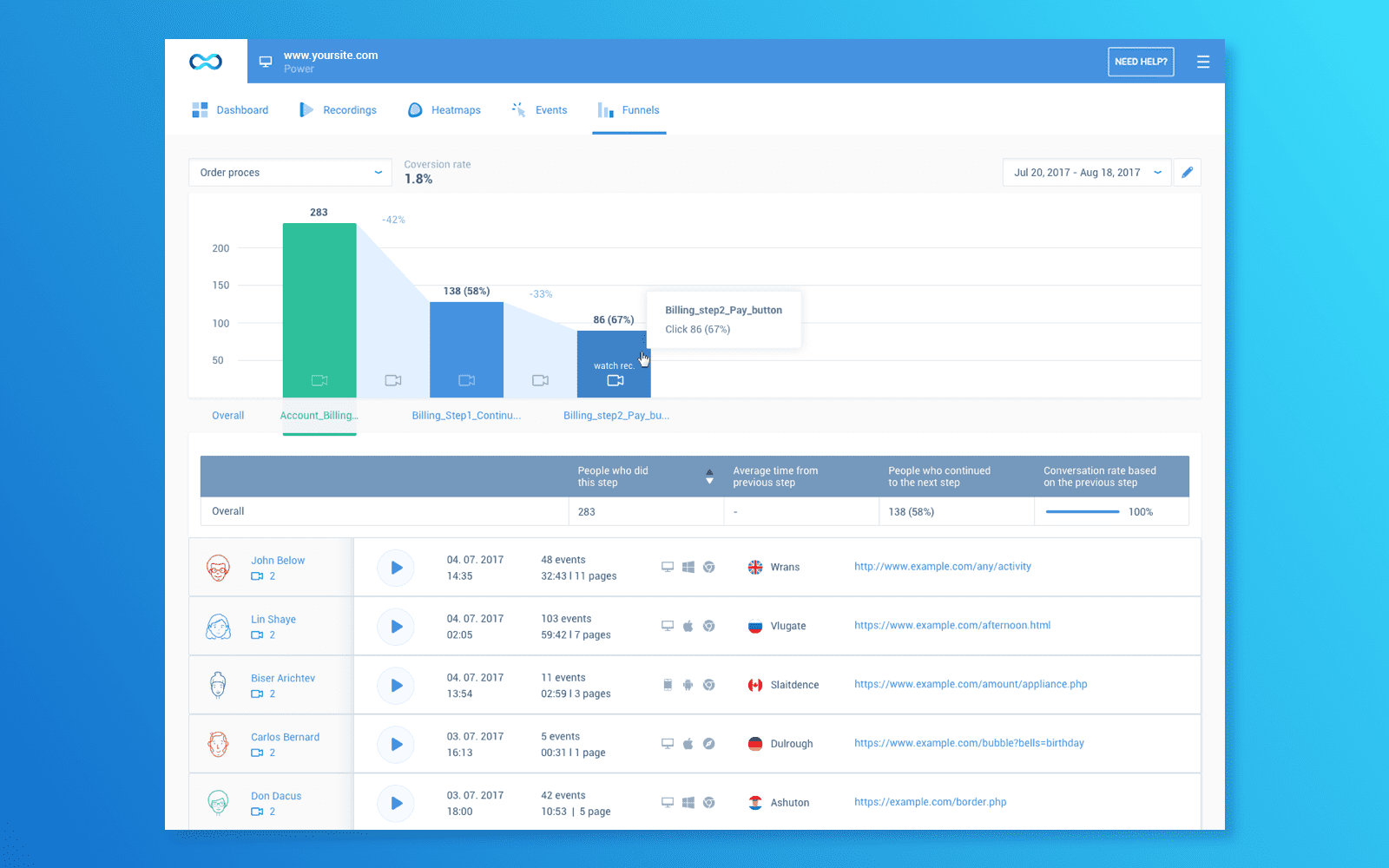



10. LogRocket
- G2 Review Rating: 4.7 out of 5 stars
- Price: Limited free tier; paid tier starts at $99 per month
LogRocket offers a front-end monitoring and product analytics platform for product teams shipping mobile and web assets. It combines session replay, performance monitoring, product analytics across funnels, events, user flows, and error tracking on live pages.
Like Hotjar and Pendo, Logrocket doesn’t focus on behavior analytics and spreads wider to cover performance tracking and issue management— that combination can be quite a handful if all you’re looking to do is observe user actions and figure out how to increase completions.
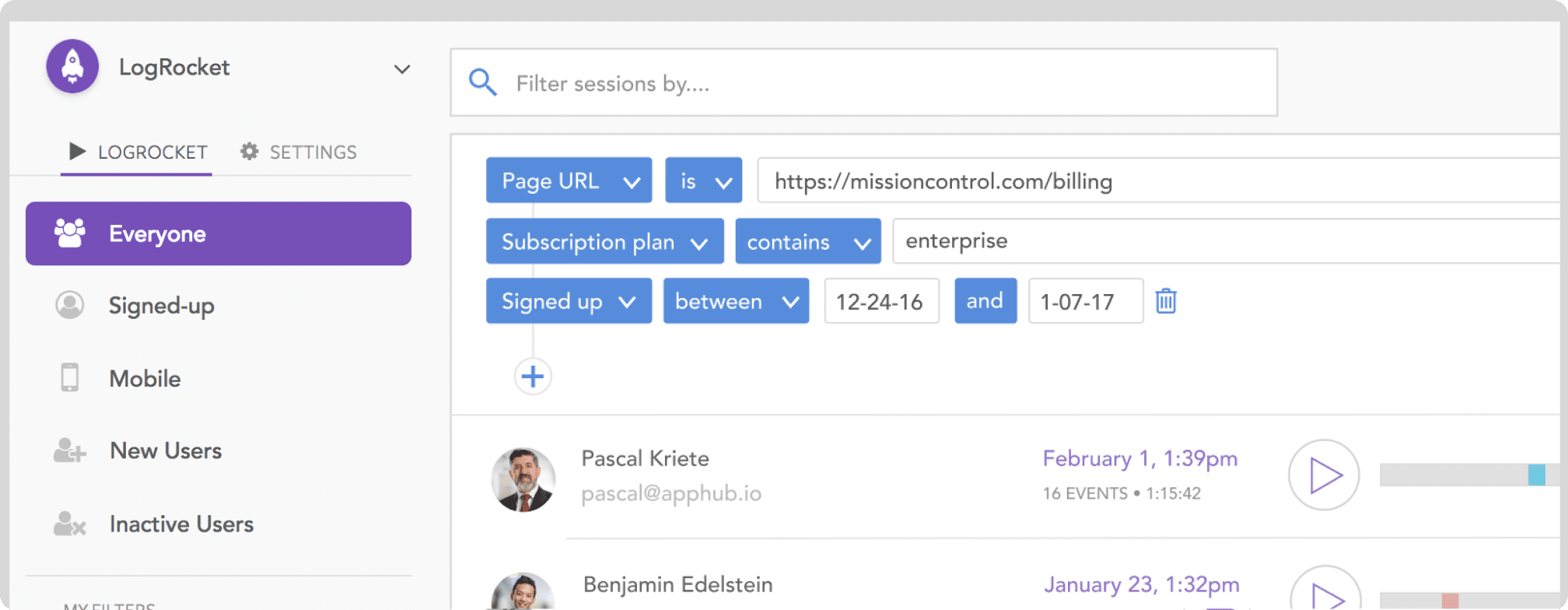



11. CleverTap
- G2 Review Rating: 4.5 out of 5 stars
- Price: Starts within the $200 per month range; prices go up to $60,000 per year for heavy users
CleverTap is a customer engagement and retention platform that marketers can use to combine analytics into one source of truth where they can:
- Segment users based on how they engage with their assets & target them with relevant campaigns
- Analyze individual campaigns to understand how they affected conversions & engagement
- Track actions and figure out the actions users are taking
CleverTap can be very confusing to navigate. It tries to do too many things out of the box — messaging across Whatsapp, email, push notifications, and popups, campaign optimization, user journey mapping, segmentation, and individualization for better targeting.
Yes, all of these are nice to have, but they can be overwhelming if all you need is a behavior analytics platform vs. all the enhancements CleverTap offers.
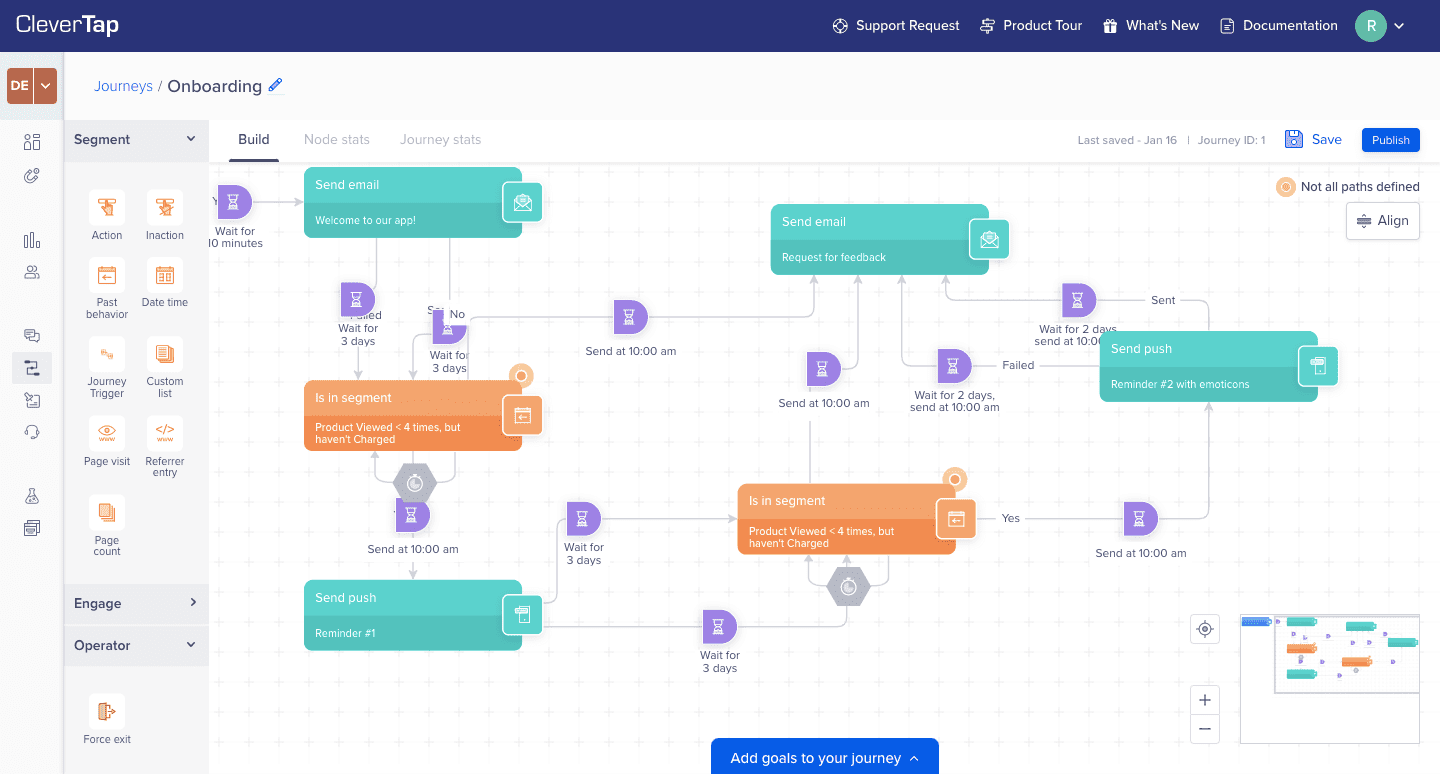

You can attract thousands of daily visitors and never hear from them again, simply because they can’t find their way around your product, help documentation, and relevant resources.
The bigger question should be, how often do users find what they’re looking for on your website?
Are your users fitting your product and resources into their daily workflow, or is it still business as usual? How many hoops do visitors have to jump through before they find the sign up page or your help docs?
Whatfix Analytics can help you find out. Our platform offers usage insights that will help you understand how individual users use your products and resources, the challenges they’re running into, and how you can redesign the user experience to be more accessible.
You can also use Whatfix to place explainer videos, step-by-step walkthroughs, and onboarding task lists that’ll help your users figure out your services at the moment of need.
Learn how Whatfix empowers product teams with behavioral analytics – and more – now
Whatfix’s digital adoption platform empowers your employees, customers, and end-users with in-app guidance, reinforcement learning, and contextual self-help support to find maximum value from software.
Thank you for subscribing!




